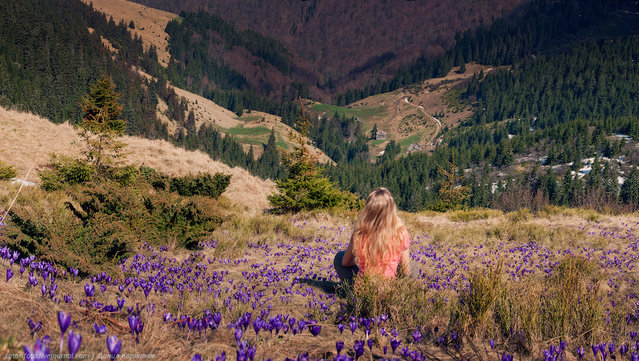30 May 2012 03:43:00,post received
0 comments
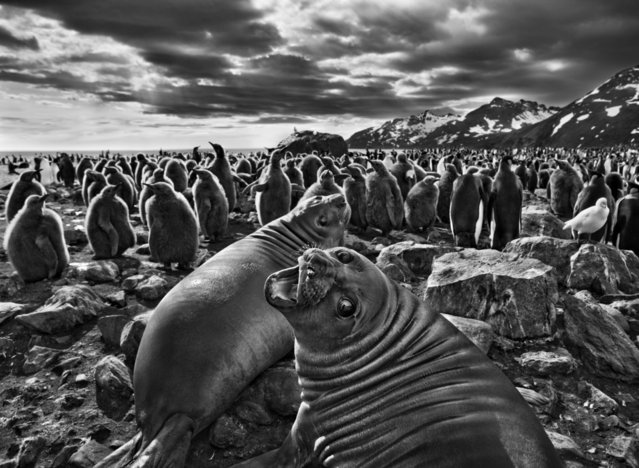
Sebastião Salgado is a Brazilian documentary photographer living in Paris. He has produced several books, and his work has been exhibited extensively around the world. His latest work, «Genesis», premieres at The Natural History Museum in London on April 11, on view through September 8, 2013. Photo: On South Georgia, a barren island in the far South Atlantic, a pair of southern elephant seal calves beckon before a colony of king penguins. “The male seals can grow to almost five tons,” says Salgado, “but these are just babies. This one looked at me with beautiful eyes”. (Photo by Sebastião Salgado/Amazonas/Contact Press Images)
30 Apr 2013 12:17:00,post received
0 comments
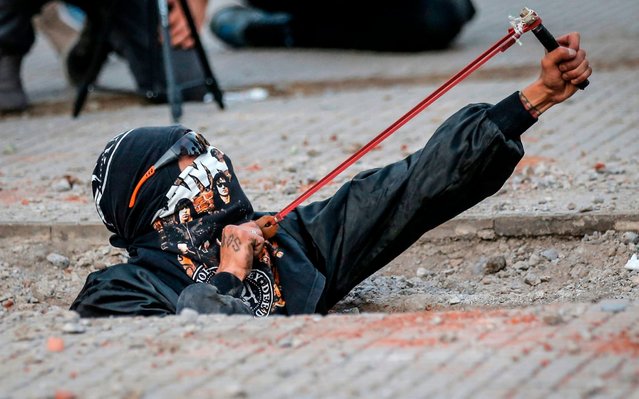
A feminist activist uses a slingshot during a protest against gender violence and patriarchy in Santiago on November 29, 2019. Furious Chileans have since October 18 been protesting social and economic inequality, and against an entrenched political elite that comes from a small number of the wealthiest families in the country, among other issues. (Photo by Javier Torres/AFP Photo)
02 Dec 2019 00:07:00,post received
0 comments
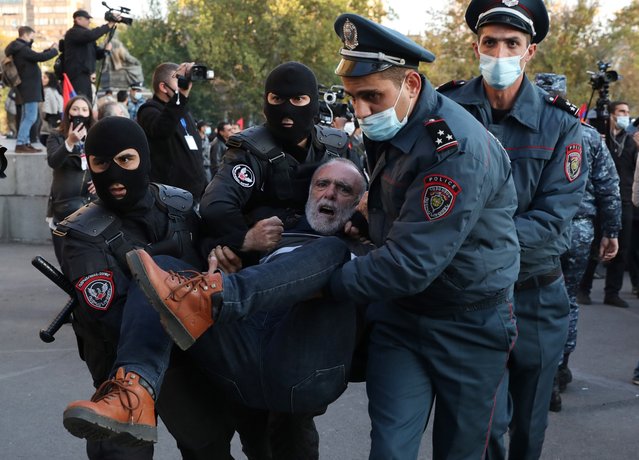
Armenian police officers detain a protestor during an opposition rally in the Freedom Square in Yerevan, Armenia, 12 November 2020. Protesters demanded the resignation of Armenian Prime Minister Nikol Pashinyan and his government. The unrest and protest erupted in Yerevan on 10 November 2020 after Armenian Prime Minister and Presidents of Azerbaijan and Russia signed a trilateral statement announcing the halt of ceasefire and all military operations in the Nagorno-Karabakh conflict zone. (Photo by Stepan Poghosyan/EPA/EFE)
14 Nov 2020 00:07:00,post received
0 comments
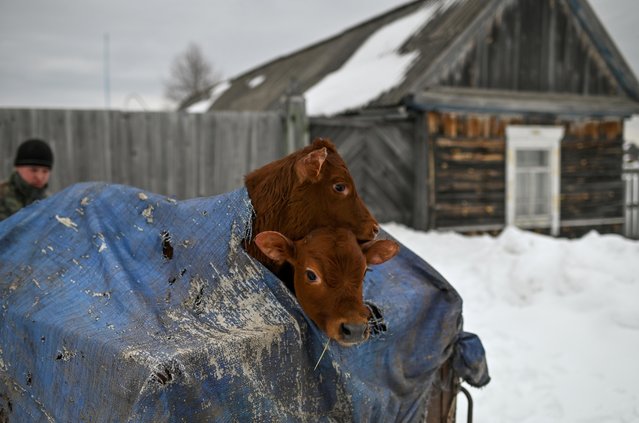
Calves look out as they are transported in a cart in the village of Litkovka, in Omsk region, Russia on March 20, 2021. (Photo by Alexey Malgavko/Reuters)
01 Apr 2021 09:26:00,post received
0 comments
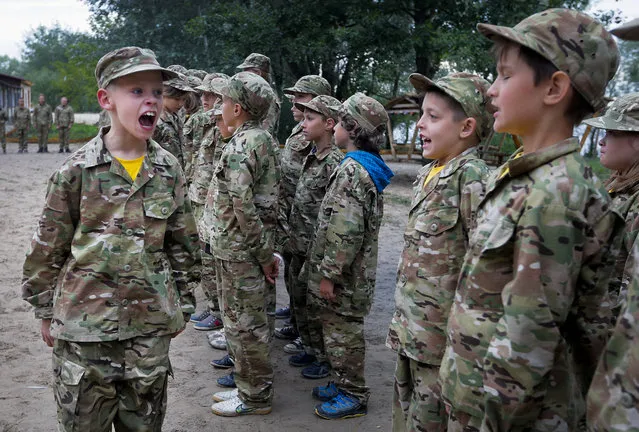
In this photo taken on Friday, July 14, 2017, a student at a paramilitary camp for children calls the rank to attention outside Kiev, Ukraine. As the deadly conflict in eastern Ukraine entered its third year, some parents in Ukraine are anxious to make sure their children are ready to fight it, instead of swimming and playing volleyball. (Photo by Efrem Lukatsky/AP Photo)
05 Aug 2017 08:21:00,post received
0 comments

Participants run through coloured powder during the Colour Run race in Moscow, Russia on June 5, 2022. (Photo by Maxim Shemetov/Reuters)
09 Jun 2022 05:06:00,post received
0 comments
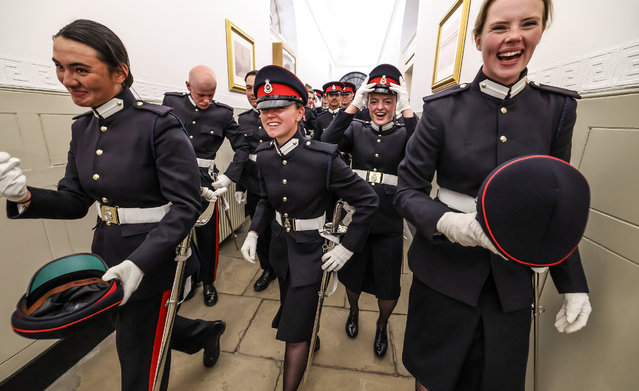
Officer cadets at Sandhurst military academy celebrate completing the Sovereign's Parade which see's them become commissioned officers in the army on April 11, 2025. The parade marks the completion of 44 weeks of intensive training for the Officer Cadets of Commissioning Course 242, all of whom will officially hold HM the King's Commission as of the stroke of midnight on the day of the parade. In addition, there are 26 international cadets from 18 countries. (Photo by Times photographer Richard Pohle)
20 Apr 2025 03:07:00,post received
0 comments

